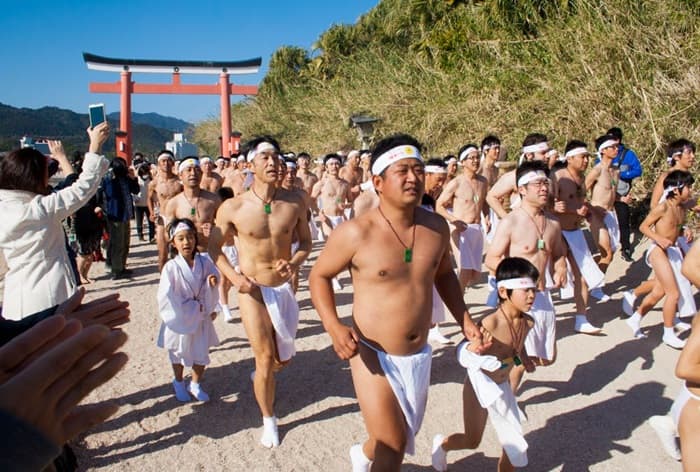
[ad_1]
The festival is scheduled to take place on February 22, and it is expected that around 10,000 participants will gather to partake in the rituals.

Tokyo: In a groundbreaking decision, the Konomiya Shrine in Japan, known for hosting a “naked man” festival with a history spanning 1,250 years, has announced that women will be allowed to participate in its rituals for the first time in history. The Konomiya Shrine is widely known for its annual Hadaka Matsuri festival, which translates to the ‘naked man’ festival. This festival has been celebrated for centuries and attracts thousands of participants and spectators each year. The festival is scheduled to take place on February 22, and it is expected that around 10,000 participants will gather to partake in the rituals.
The decision to allow women to participate in the shrine’s rituals is seen as a significant move towards gender equality in Japan. Local women and gender experts have praised the elders’ decision, recognizing it as a step in the right direction. However, the exclusion of women from the scrum has sparked some debate and criticism.
While some argue that the exclusion is rooted in tradition and should be respected, others believe that it perpetuates gender inequality. Advocates for gender equality argue that women should be allowed to fully participate in all aspects of the festival, including the scrum. They argue that excluding women from this tradition reinforces outdated gender norms and limits their access to cultural and religious practices.
Condition for women participants
The festival, which faced disruptions due to the pandemic in recent years, now witnesses a notable shift as approximately 40 women will be allowed to engage in certain rituals of the festival which has been a ‘men-only’ affair. However, they will remain fully clothed, dressed in traditional happi coats, and avoid the traditional violent clash of near-naked men in loincloths, as per an Independent report. They will only participate in the ‘naoizasa’ ritual, which will require them to carry bamboo grass wrapped in cloth into the shrine grounds.
Ayaka Suzuki, 36, was quoted in Yomiuri Shimbun saying that she had wanted to take part in the festival ever since she was a little girl. She said she used to think: “I could’ve participated if I were a boy!”
Suzuki is vice chair of the group that has been demanding that women be allowed to take part in the festival, saying that she intends to use her role in the event to “pray for the safety of my family and the people affected by the Noto Peninsula earthquake”.
What is the festival all about
The roots of the festival go back to a time when superstitious local people wanted to be assured of luck in the year ahead, particularly at a time of plague and other common diseases. Local men would gather at the shrine in the otherwise quiet town early in the morning to start the day’s rituals.
According to South China Morning Post, the men would only wear white “fundoshi” loincloths and coloured bandanas as they paraded through the town, throwing buckets of icy water over each other, swigging sake to stay warm and carrying portable shrines on long bamboo poles decorated with ribbons. As the revellers finally reach the shrine in the late afternoon, they call out for the shin-otoko to appear.
The chosen man is kept in solitude for days in the lead-up to the event, spending the time in prayer, according to local legend. On the day of the festival, he is shaved from head to toe, stripped naked and finally sent out into the crowds surrounding the shrine.
The thousands of onlookers surge and sway as they attempt to touch the shin-otoko for good luck by transferring their bad fortune to him. After much heaving and shoving, the shin-otoko is pulled back into the safety of the shrine.
[ad_2]